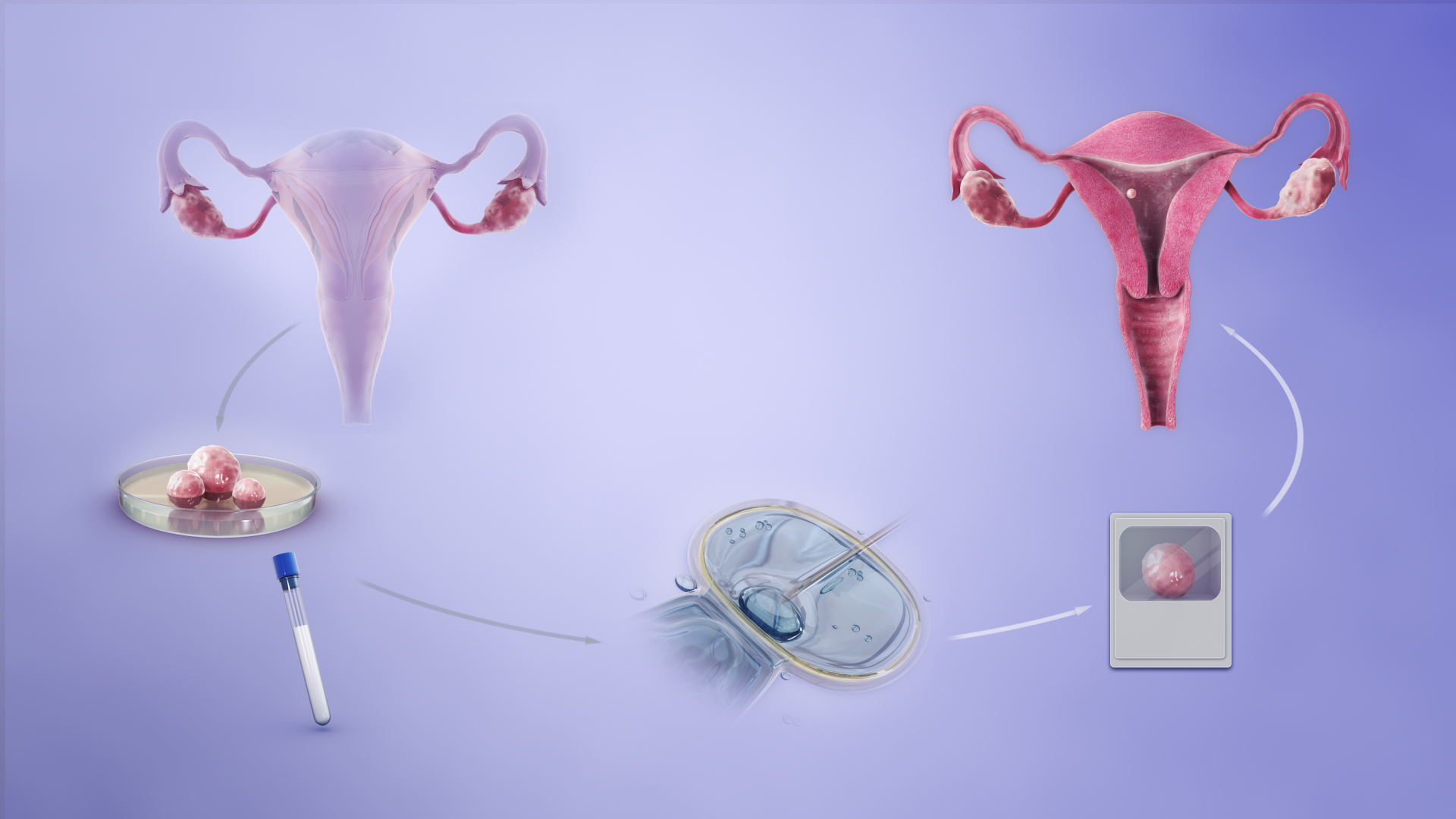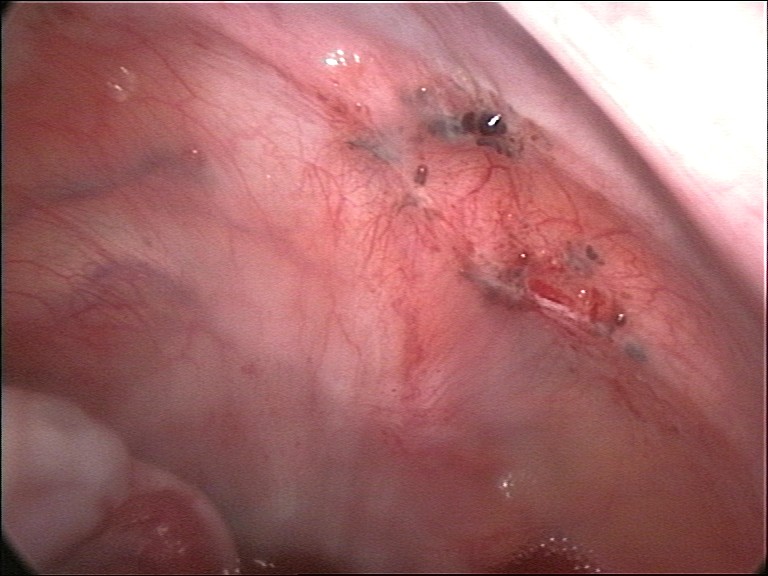|
Infertility
In biology, infertility is the inability of a male and female organism to Sexual reproduction, reproduce. It is usually not the natural state of a healthy organism that has reached sexual maturity, so children who have not undergone puberty, which is the body's start of fertility, reproductive capacity, are excluded. It is also a normal state in women after menopause. In humans, ''infertility'' is defined as the inability to become pregnant after at least one year of unprotected and regular sexual intercourse involving a male and female partner. There are many causes of infertility, including some that Assisted reproductive technology, medical intervention can treat. Estimates from 1997 suggest that worldwide about five percent of all heterosexual couples have an unresolved problem with infertility. Many more couples, however, experience involuntary childlessness for at least one year, with estimates ranging from 12% to 28%. Male infertility is responsible for 20–30% of infert ... [...More Info...] [...Related Items...] OR: [Wikipedia] [Google] [Baidu] |
Female Infertility
Female infertility refers to infertility in women, which is the inability to Fertilisation, conceive after sexual intercourse. It affects an estimated 48 million women, globally. Female infertility varies widely by region. The highest rates of female infertility are found in Eastern Europe and South Central Asia, followed by South Asia, Sub-Saharan Africa, and Middle East and North Africa. Female infertility rates are lowest in East Asia and Latin America. Fertility is affected by a variety of factors, including hormone, hormones, nutritional status, disease, and malformations of the uterus. Infertility affects women from around the world, and the social stigmas affecting infertile women may vary from region to region. Cause Causes or factors of female infertility can basically be classified regarding whether they are Acquired disorder, acquired or genetic, or strictly by location. Although factors of female infertility can be classified as either acquired or genetic, female i ... [...More Info...] [...Related Items...] OR: [Wikipedia] [Google] [Baidu] |
Male Infertility
Male infertility refers to a sexually mature male's inability to impregnate a fertile female. Male infertility can wholly or partially account for 40% of infertility among couples who are trying to have children. "A problem with the male is the sole cause, or a contributing cause, of infertility in about 40 percent of infertile couples. It affects approximately 7% of all men. Male infertility is commonly due to deficiencies in the semen, and semen quality is used as a surrogate measure of male fecundity. More recently, advance sperm analyses that examine intracellular sperm components are being developed. Age considerations Sperm motility increases from puberty through one's mid-thirties. Research shows that from the age of 36 onwards, sperm motility decreases from 40% Grade A & B to 31% in one's 50s. The effects of aging on semen quality is summarized below based on a study of 1,219 subjects: 90% of seminiferous tubules in men in their 20s and 30s contain spermatids, whereas ... [...More Info...] [...Related Items...] OR: [Wikipedia] [Google] [Baidu] |
Polycystic Ovarian Syndrome
Polycystic ovary syndrome, or polycystic ovarian syndrome, (PCOS) is the most common endocrine disorder in women of reproductive age. The name is a misnomer, as not all women with this condition develop cysts on their ovaries. The name originated from the observation of cysts which form on the ovaries of some women with this condition. However, this is not a universal symptom and is not the underlying cause of the disorder. The primary characteristics of PCOS include hyperandrogenism, anovulation, insulin resistance, and neuroendocrine disruption. Women may also experience irregular menstrual periods, heavy periods, excess hair, acne, pelvic pain, difficulty getting pregnant, and patches of darker skin. Beyond its reproductive implications, PCOS is increasingly recognized as a multifactorial metabolic condition with significant long-term health consequences, including an elevated risk of cardiovascular disease and type 2 diabetes. A review of international eviden ... [...More Info...] [...Related Items...] OR: [Wikipedia] [Google] [Baidu] |
Endometriosis
Endometriosis is a disease in which Tissue (biology), tissue similar to the endometrium, the lining of the uterus, grows in other places in the body, outside the uterus. It occurs in women and a limited number of other female mammals. Endometrial tissue most often grows on or around reproductive organs such as the ovaries and fallopian tubes, on the outside surface of the uterus, or the tissues surrounding the uterus and the ovaries (peritoneum). It can also grow on other organs in the pelvic region like the Gastrointestinal tract, bowels, stomach, bladder, or the cervix. Rarely, it can also occur in other parts of the body. Symptoms can be very different from person to person, varying in range and intensity. About 25% of individuals have no symptoms, while for some it can be a debilitating disease. Common symptoms include pelvic pain, Heavy menstrual bleeding, heavy and Dysmenorrhea, painful periods, pain with bowel movements, Dysuria, painful urination, Dyspareunia, pain dur ... [...More Info...] [...Related Items...] OR: [Wikipedia] [Google] [Baidu] |
PCOS
Polycystic ovary syndrome, or polycystic ovarian syndrome, (PCOS) is the most common endocrine disorder in women of reproductive age. The name is a misnomer, as not all women with this condition develop cysts on their ovaries. The name originated from the observation of cysts which form on the ovaries of some women with this condition. However, this is not a universal symptom and is not the underlying cause of the disorder. The primary characteristics of PCOS include hyperandrogenism, anovulation, insulin resistance, and neuroendocrine disruption. Women may also experience irregular menstrual periods, heavy periods, excess hair, acne, pelvic pain, difficulty getting pregnant, and patches of darker skin. Beyond its reproductive implications, PCOS is increasingly recognized as a multifactorial metabolic condition with significant long-term health consequences, including an elevated risk of cardiovascular disease and type 2 diabetes. A review of international evidence ... [...More Info...] [...Related Items...] OR: [Wikipedia] [Google] [Baidu] |
Ovulation
Ovulation is an important part of the menstrual cycle in female vertebrates where the egg cells are released from the ovaries as part of the ovarian cycle. In female humans ovulation typically occurs near the midpoint in the menstrual cycle and after the follicular phase. Ovulation is stimulated by an increase in luteinizing hormone (LH). The ovarian follicles rupture and release the secondary oocyte ovarian cells. After ovulation, during the luteal phase, the egg will be available to be fertilized by sperm. If it is not, it will break down in less than a day. Meanwhile, the uterine lining ( endometrium) continues to thicken to be able to receive a fertilized egg. If no conception occurs, the uterine lining will eventually break down and be shed from the body via the vagina during menstruation. Some people choose to track ovulation in order to improve or aid becoming pregnant by timing intercourse with their ovulation. The signs of ovulation may include cervical muc ... [...More Info...] [...Related Items...] OR: [Wikipedia] [Google] [Baidu] |
Fertility
Fertility in colloquial terms refers the ability to have offspring. In demographic contexts, fertility refers to the actual production of offspring, rather than the physical capability to reproduce, which is termed fecundity. The fertility rate is the average number of children born during an individual's lifetime. In medicine, fertility refers to the ability to have children, and infertility refers to difficulty in reproducing naturally. In general, infertility or subfertility in humans is defined as not being able to conceive a child after one year (or longer) of unprotected sex. The antithesis of ''fertility'' is infertility, while the antithesis of ''fecundity'' is sterility. Demography In demographic contexts, fertility refers to the actual production of offspring, rather than the physical capability to produce which is termed fecundity. While fertility can be measured, fecundity cannot be. Demographers measure the fertility rate in a variety of ways, which can be broa ... [...More Info...] [...Related Items...] OR: [Wikipedia] [Google] [Baidu] |
Gynecology
Gynaecology or gynecology (see American and British English spelling differences) is the area of medicine concerned with conditions affecting the Female reproductive system, female reproductive system. It is often paired with the field of obstetrics, which focuses on pregnancy and childbirth, thereby forming the combined area of obstetrics and gynaecology (OB-GYN). Gynaecology encompasses both Primary care, primary and Preventive healthcare, preventative care of issues related to female reproduction and sexual health, such as the uterus, vagina, fallopian tubes, ovaries, and breasts; subspecialties include family planning; minimally invasive surgery; pediatric and adolescent gynecology; and pelvic medicine and reconstructive surgery. While gynaecology has traditionally centered on Cisgender, cisgender women, it increasingly encompasses anyone with female organs, including transgender, intersex, and Non-binary gender, nonbinary individuals; however, many non-cis women face acce ... [...More Info...] [...Related Items...] OR: [Wikipedia] [Google] [Baidu] |
Fertility Awareness
Fertility awareness (FA) refers to a set of practices used to determine the fertile and infertile phases of a woman's menstrual cycle. Fertility awareness methods may be used to avoid pregnancy, to achieve pregnancy, or as a way to monitor gynecological health. Methods of identifying infertile days have been known since antiquity, but scientific knowledge gained during the past century has increased the number, variety, and especially accuracy of methods. Systems of fertility awareness rely on observation of changes in one or more of the primary fertility signs ( basal body temperature, cervical mucus, and cervical position), tracking menstrual cycle length and identifying the fertile window based on this information, or both. Other signs may also be observed: these include breast tenderness and mittelschmerz (ovulation pains), urine analysis strips known as ovulation predictor kits (OPKs), and microscopic examination of saliva or cervical fluid. Also available are computerized ... [...More Info...] [...Related Items...] OR: [Wikipedia] [Google] [Baidu] |
Fallopian Tubes
The fallopian tubes, also known as uterine tubes, oviducts or salpinges (: salpinx), are paired tubular sex organs in the human female body that stretch from the ovaries to the uterus. The fallopian tubes are part of the female reproductive system. In other vertebrates, they are only called oviducts. Each tube is a muscular hollow organ that is on average between in length, with an external diameter of . It has four described parts: the intramural part, isthmus, ampulla, and infundibulum with associated fimbriae. Each tube has two openings: a proximal opening nearest to the uterus, and a distal opening nearest to the ovary. The fallopian tubes are held in place by the mesosalpinx, a part of the broad ligament mesentery that wraps around the tubes. Another part of the broad ligament, the mesovarium suspends the ovaries in place. An egg cell is transported from an ovary to a fallopian tube where it may be fertilized in the ampulla of the tube. The fallopian tubes are line ... [...More Info...] [...Related Items...] OR: [Wikipedia] [Google] [Baidu] |
Pregnant
Pregnancy is the time during which one or more offspring gestation, gestates inside a woman's uterus. A multiple birth, multiple pregnancy involves more than one offspring, such as with twins. Conception (biology), Conception usually occurs following sexual intercourse, vaginal intercourse, but can also occur through assisted reproductive technology procedures. A pregnancy may end in a Live birth (human), live birth, a miscarriage, an Abortion#Induced, induced abortion, or a stillbirth. Childbirth typically occurs around 40 weeks from the start of the Menstruation#Onset and frequency, last menstrual period (LMP), a span known as the Gestational age (obstetrics), ''gestational age''; this is just over nine months. Counting by Human fertilization#Fertilization age, ''fertilization age'', the length is about 38 weeks. Implantation (embryology), Implantation occurs on average 8–9 days after Human fertilization, fertilization. An ''embryo'' is the term for the deve ... [...More Info...] [...Related Items...] OR: [Wikipedia] [Google] [Baidu] |




